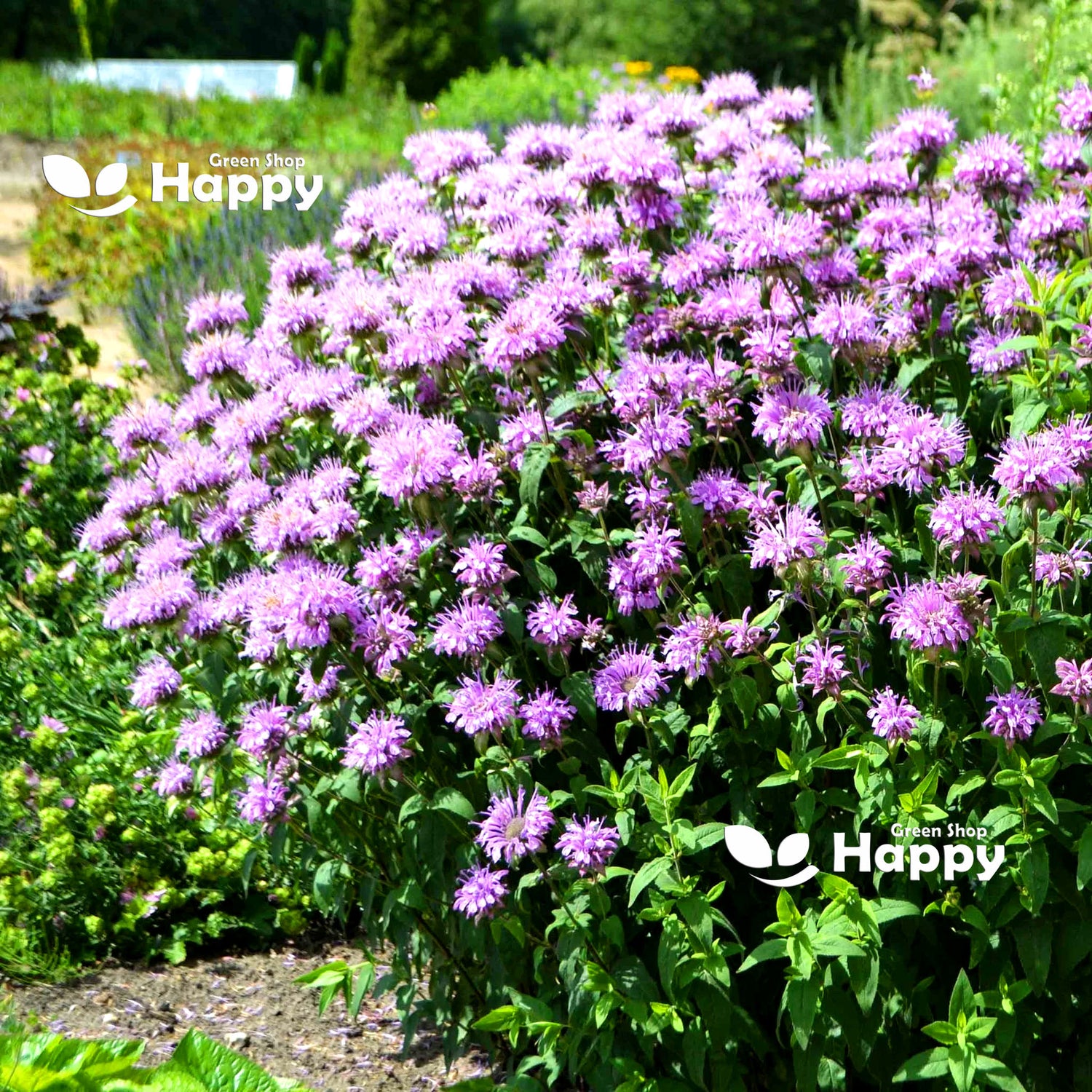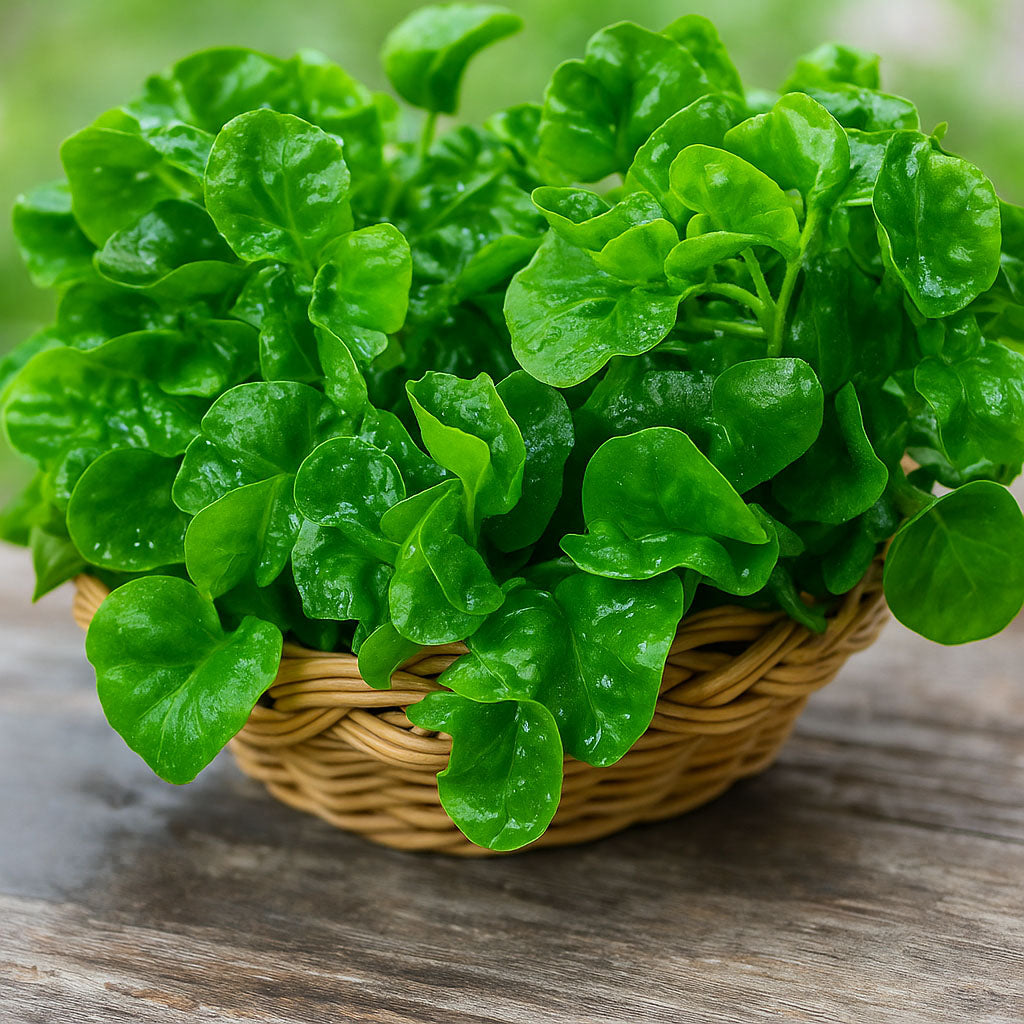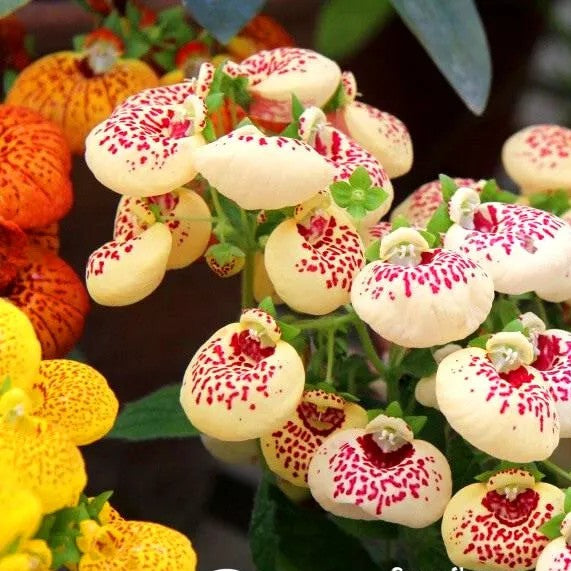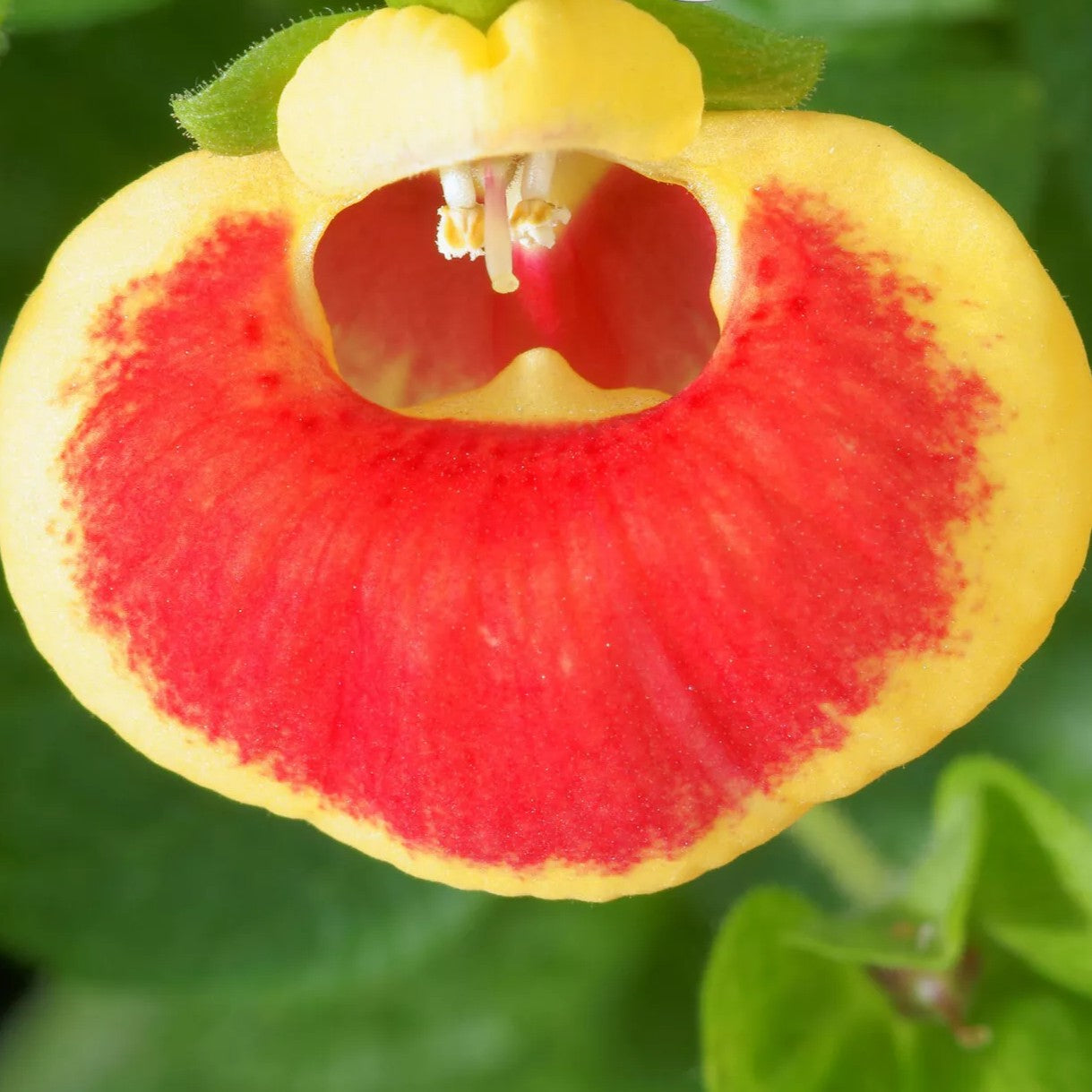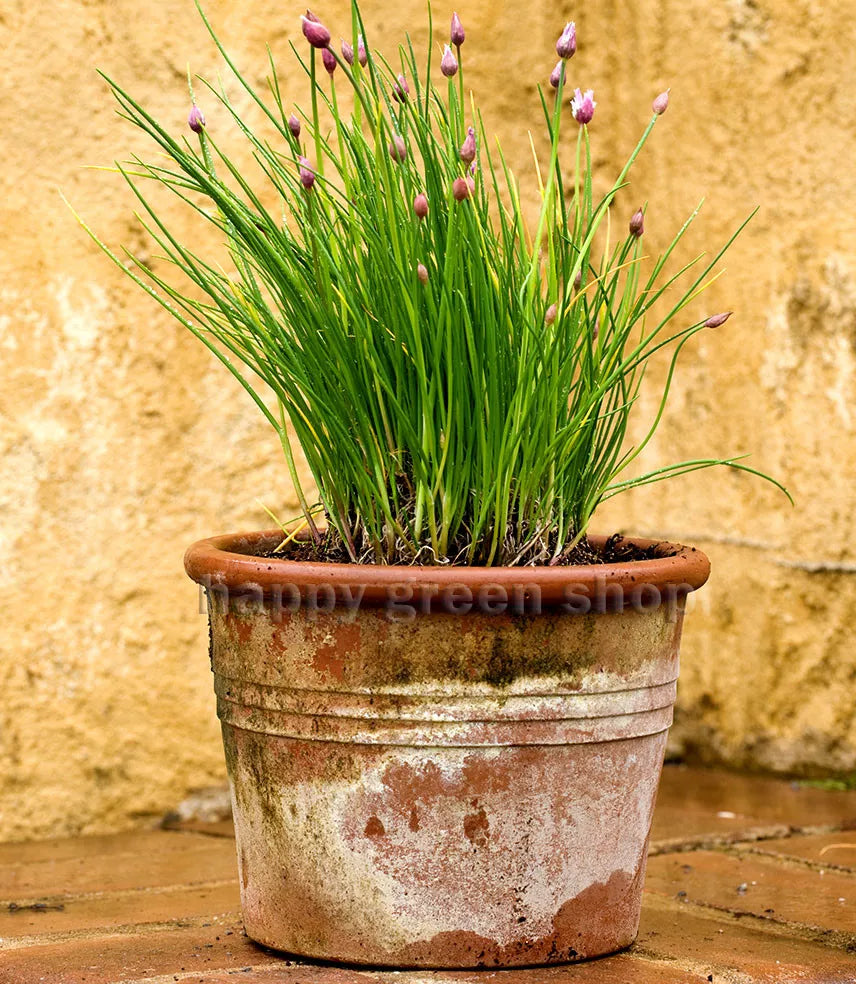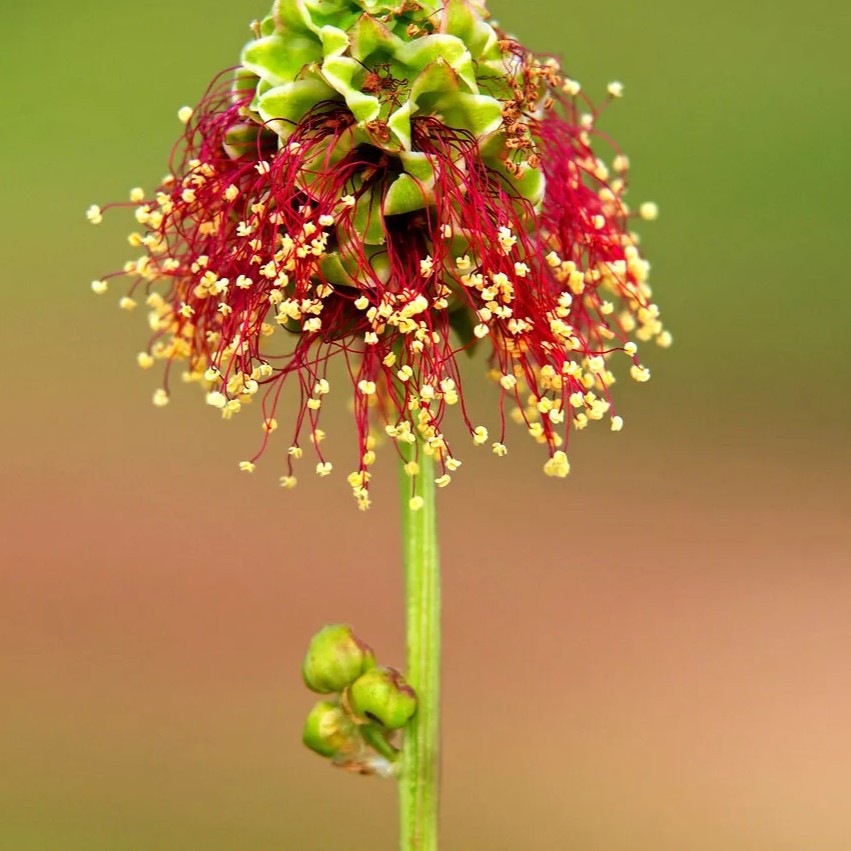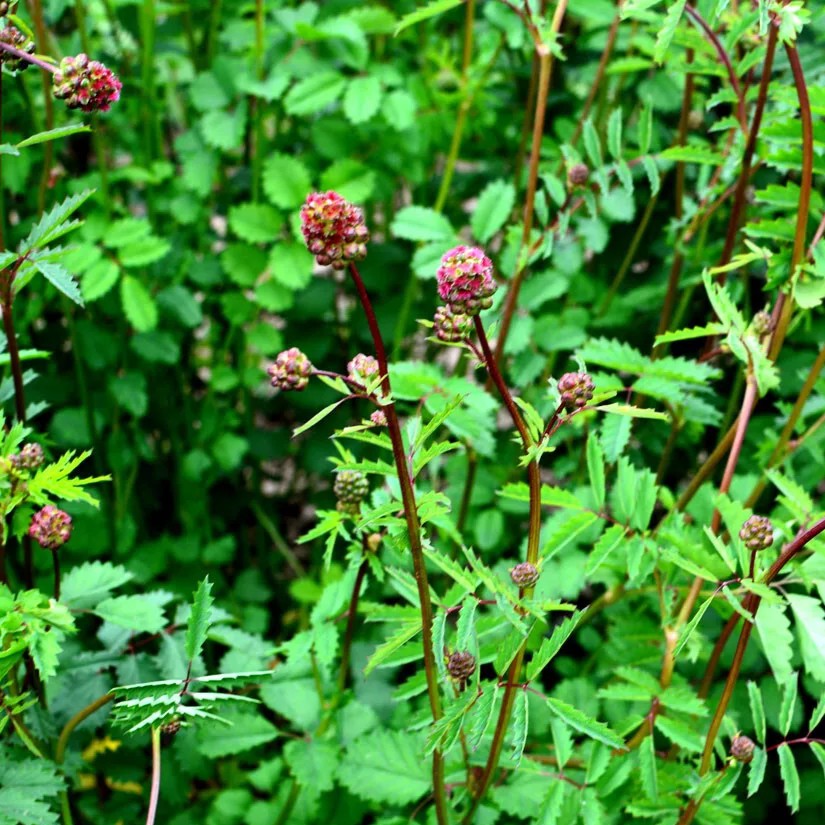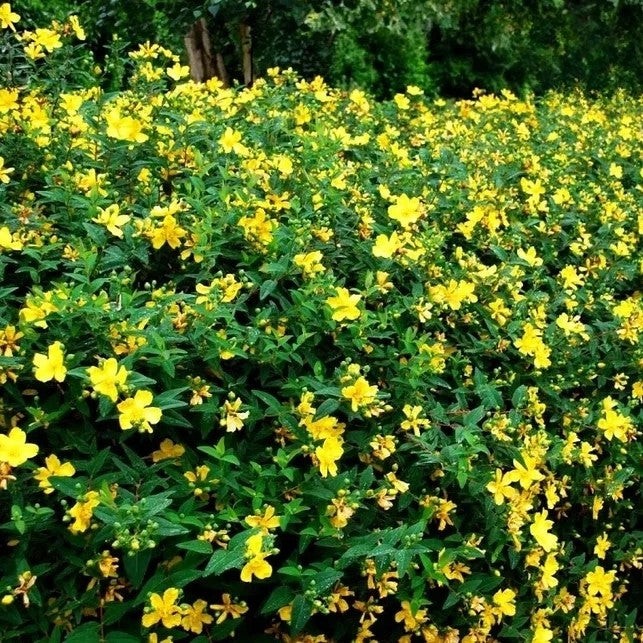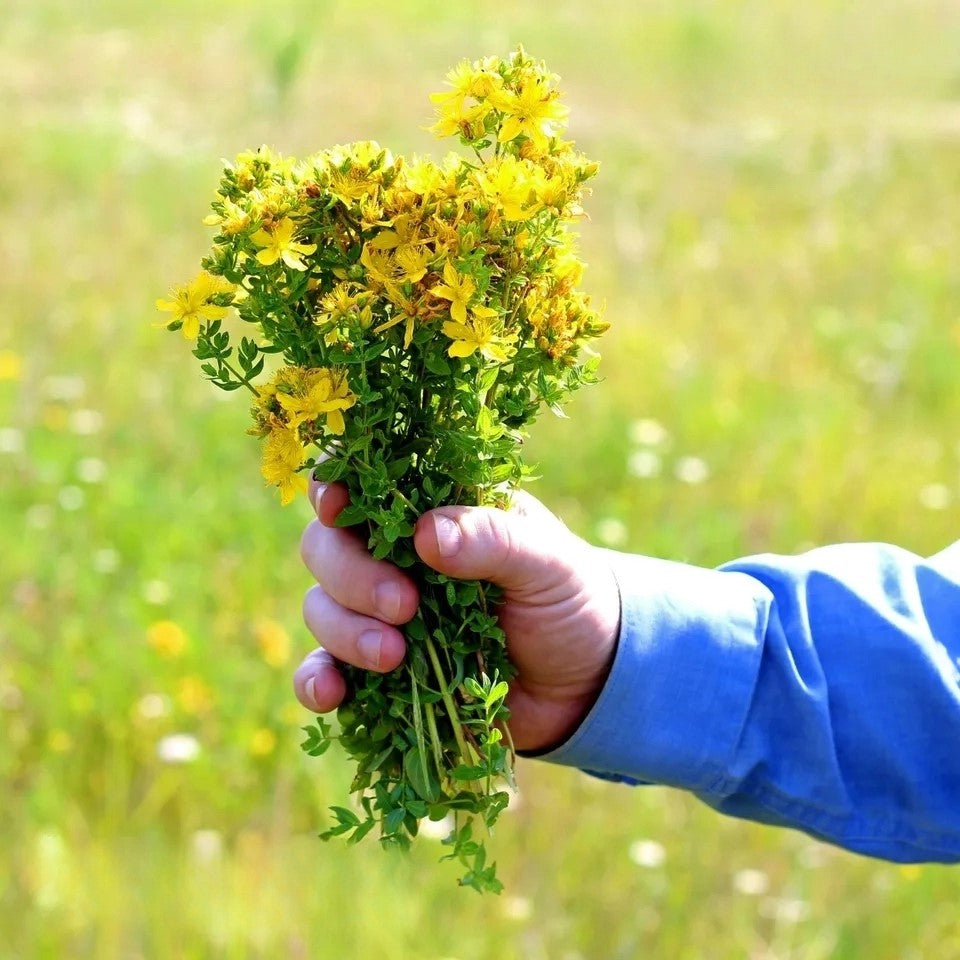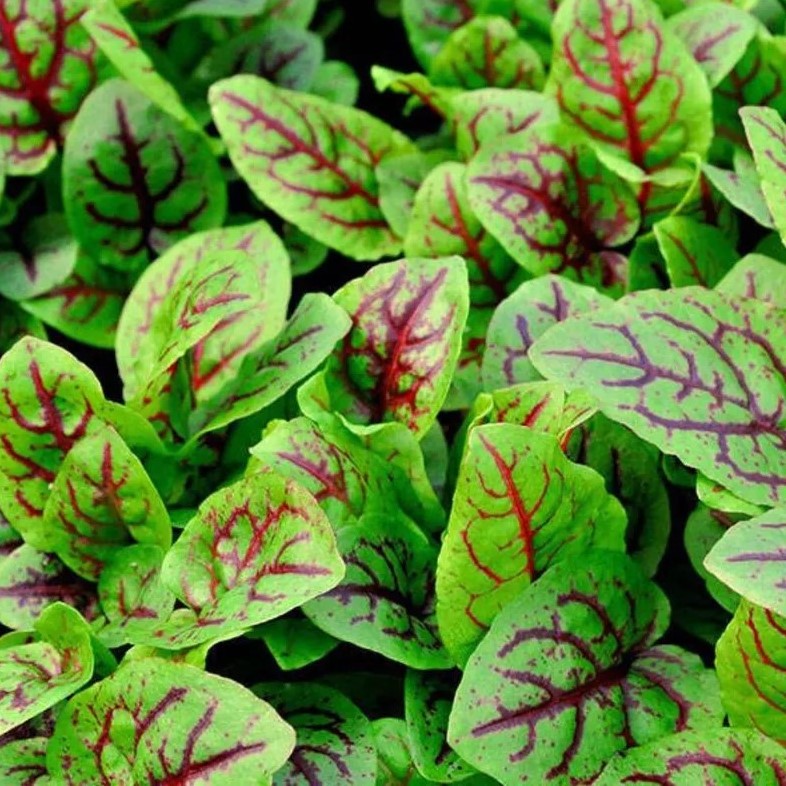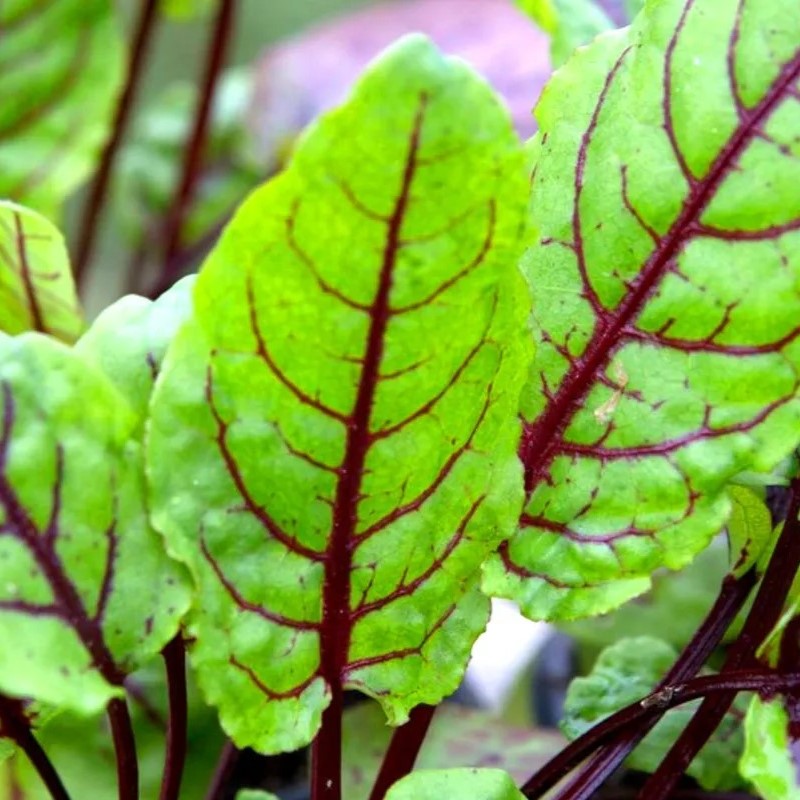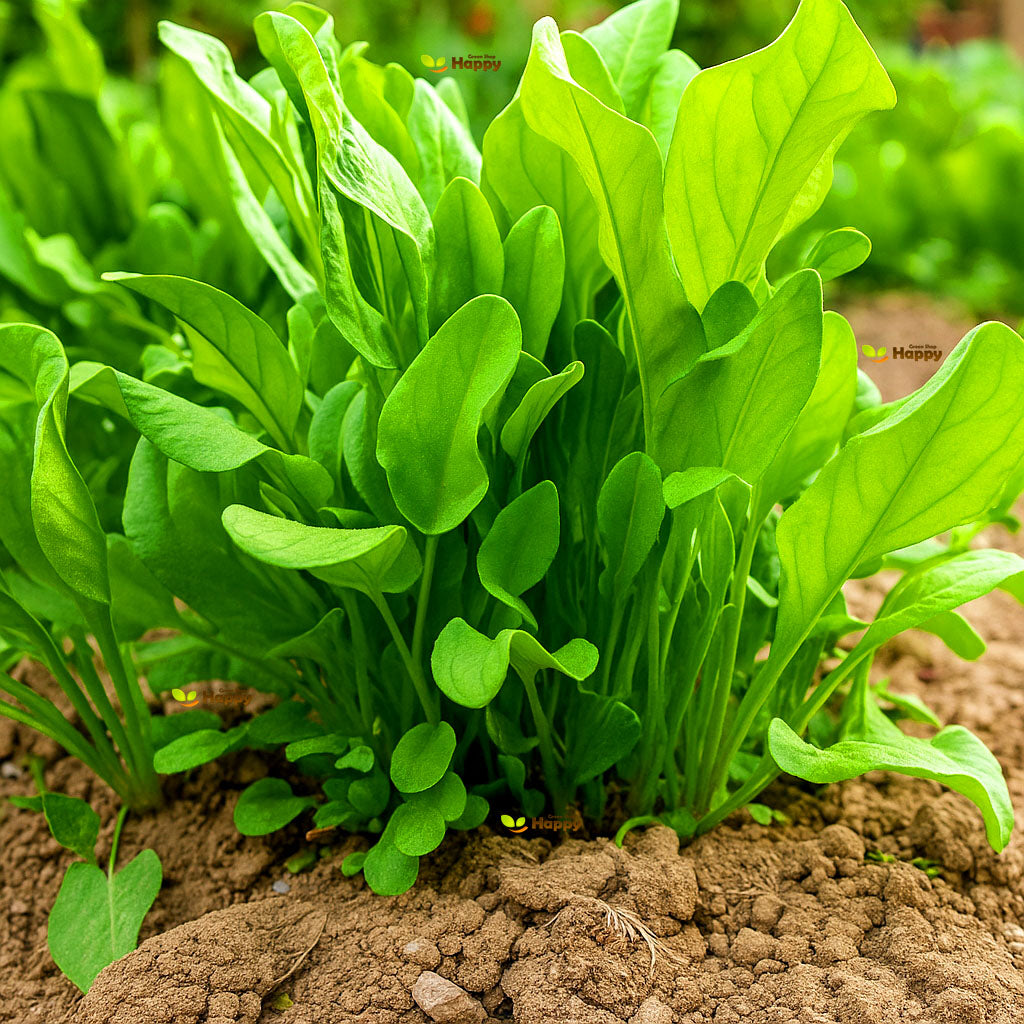Sort by:
31 products
31 products
Wild Bergamot – 1,300 Seeds (Monarda fistulosa)
Wild Bergamot (Monarda fistulosa) is a hardy perennial known for its fragrant lavender-pink blooms and aromatic foliage. A favorite of pollinators, it attracts bees, butterflies, and hummingbirds, making it perfect for pollinator gardens, borders, and wildflower meadows. Easy to grow and low-maintenance, it provides long-lasting color and texture from mid-summer to early autumn.
Why Grow "Wild Bergamot"
-
Fragrant lavender-pink blooms
-
Aromatic foliage with medicinal and culinary uses
-
Attracts bees, butterflies, and hummingbirds
-
Hardy and low-maintenance perennial
Key Features
-
Type: Perennial (Monarda fistulosa)
-
Height: 60–90 cm
-
Flowering: July–September
-
Position: Full sun to partial shade
-
Uses: Pollinator gardens, borders, wildflower meadows, cottage gardens
Ideal For
-
Pollinator-friendly gardens
-
Cottage-style or naturalized borders
-
Wildflower meadows
-
Herbal and sensory gardens
Sowing & Growing
-
Sow indoors: February–April in trays
-
Sow outdoors: April–May directly in prepared soil
-
Germination: 10–20 days at 18–22°C
-
Thin seedlings to 30–40 cm apart
-
Prefers well-drained soil and full sun
-
Deadhead to encourage prolonged flowering
Watercress – Seeds (Nasturtium officinale)
Watercress is a fast-growing, nutrient-packed leafy green with a peppery, fresh flavor. Perfect for salads, sandwiches, soups, and garnishes, it thrives in moist soil or near water and adds a vibrant, tangy taste to your dishes. Easy to grow, it’s an ideal addition to kitchen gardens, herb beds, or containers.
How to Grow
-
Sow seeds in shallow trays or directly in moist soil from March to July.
-
Keep seeds lightly covered and consistently damp.
-
Prefers partial shade and consistently moist or wet conditions.
-
Transplant or thin seedlings to allow 10–15 cm spacing.
-
Harvest leaves when young for the best flavor.
Key Features
-
Fast-growing, nutrient-rich leafy green
-
Fresh, peppery flavor perfect for salads and garnishes
-
Thrives in moist soil or water-adjacent beds
-
Ideal for continuous cut-and-come-again harvesting
-
Easy to grow in containers, garden beds, or water troughs
Ideal For
-
Fresh salads, sandwiches, soups, and garnishes
-
Kitchen gardens, herb beds, and small spaces
-
Health-conscious and culinary gardeners
Sowing & Harvest
-
Sow: March to July
-
Depth: Lightly covered
-
Spacing: 10–15 cm
-
Harvest: April to October
Quick Tip
-
Keep soil or growing medium consistently wet to maintain crisp, flavorful leaves.
Pocketbook Plant Mix – Seeds (Calceolaria herbeohybrida)
Pocketbook Plant Mix (Calceolaria herbeohybrida) offers a delightful display of colorful, pouch-shaped flowers that brighten indoor and shaded garden spaces. This compact annual is ideal for pots, containers, and cool spots where vibrant, long-lasting blooms are desired. Perfect for adding whimsical color and charm to any collection.
Why Grow "Pocketbook Plant Mix"
-
Bright, pouch-shaped flowers in mixed colors
-
Compact, easy-to-grow annual
-
Ideal for containers, pots, and indoor displays
-
Long-lasting bloom period for summer and early autumn
Key Features
-
Type: Half-hardy annual (Calceolaria herbeohybrida)
-
Height: 20–30 cm
-
Flowering: Late spring to early autumn
-
Position: Partial shade, bright indirect light
-
Uses: Containers, pots, indoor displays, shaded borders
Ideal For
-
Patio and balcony containers
-
Indoor pots and decorative displays
-
Cool, partially shaded garden spots
-
Adding whimsical, long-lasting color
Sowing & Growing
-
Sow indoors: February–March in seed trays
-
Germination: 14–21 days at 18–20°C
-
Transplant seedlings into pots when large enough
-
Keep soil moist, avoid direct sun
-
Remove spent flowers to encourage more blooms
Chives 'Bohemia' - 1000 seeds (Allium schoenoprasum) - Hardy Perennial - Overwintering
£1.15
Unit price perChives 'Bohemia' - 1000 seeds (Allium schoenoprasum) - Hardy Perennial - Overwintering
£1.15
Unit price perChives ‘Bohemia’ – Seeds (Allium schoenoprasum) – Hardy Perennial
Chives ‘Bohemia’ is a hardy perennial herb, perfect for overwintering and providing fresh growth year after year. Known for its fine, hollow green leaves and mild onion flavor, it’s a versatile kitchen herb ideal for salads, soups, sauces, and garnishes. In summer, attractive purple-pink flowers appear, loved by bees and pollinators, making this a decorative as well as useful garden plant.
How to Grow
-
Sow indoors: February – April in pots or trays at 15–20°C.
-
Sow outdoors: April – July in finely prepared soil.
-
Thin or transplant seedlings to 20 cm apart.
-
Prefers full sun or partial shade and well-drained soil.
-
Cut regularly to encourage fresh growth.
Key Features
-
Hardy perennial herb with overwintering growth
-
Fine, mild onion-flavored leaves
-
Decorative purple flowers attract pollinators
-
Easy to grow in pots, borders, or herb gardens
-
Reliable year-round harvests
Ideal For
-
Fresh salads, soups, sauces, and garnishes
-
Herb gardens, borders, and containers
-
Attracting bees and pollinators
Sowing & Harvest
-
Sow: February – July
-
Harvest: May – October, with regrowth in spring
Quick Tip
Divide clumps every few years to maintain healthy growth and extend the lifespan of your chive plants.
Salad Burnet – Seeds (Sanguisorba minor)
Salad Burnet is a hardy perennial herb known for its fresh, cucumber-like flavor. Its delicate, serrated leaves are perfect for adding to salads, dips, sauces, and refreshing summer drinks. An attractive, low-maintenance plant, it also makes a lovely edging herb for the garden.
This herb is drought-tolerant once established and can be harvested repeatedly throughout the growing season. A traditional herb with both culinary and ornamental value.
How to Grow
-
Sow indoors: March – April
-
Sow outdoors: April – June
-
Depth: 0.5 cm, lightly cover
-
Spacing: 25–30 cm between plants
-
Position: Full sun to partial shade
-
Soil: Well-drained, light to medium soil
-
Watering: Moderate; drought tolerant once mature
Key Features
-
Perennial herb with cucumber-like flavor
-
Ideal for salads, sauces, and refreshing drinks
-
Hardy, drought-tolerant, and low maintenance
-
Attractive edging plant for herb gardens
-
Repeated harvests throughout summer
Harvest
-
Harvesting period: May – October
-
Pick young, fresh leaves regularly for the best flavor.
Short Tip
Snip leaves just before use, as their delicate flavor is best enjoyed fresh.
Stinging Nettle – Seeds
(Urtica dioica)
Stinging Nettle (Urtica dioica) is a versatile perennial herb valued for its nutritional and medicinal properties. Its vibrant green leaves are rich in vitamins and minerals, making it perfect for teas, soups, and natural remedies. Hardy and easy to grow, it also provides shelter and food for wildlife, supporting pollinators and beneficial insects.
Why Grow Stinging Nettle?
-
Nutrient-rich leaves for culinary and medicinal use
-
Hardy perennial, easy to grow
-
Supports pollinators and wildlife
-
Traditional herbal remedy with multiple uses
Key Features
-
Type: Perennial herb
-
Height: 60–150 cm
-
Leaves: Harvest from spring to autumn
-
Position: Full sun to partial shade
-
Soil: Moist, fertile, well-drained
Ideal For
-
Herbal and edible gardens
-
Pollinator-friendly plantings
-
Natural remedies and teas
-
Wildlife habitats
Sowing & Growing
-
Sow indoors: February–April in seed trays
-
Sow outdoors: April–May directly in prepared soil
-
Germination: 14–28 days at 15–20°C
-
Spacing: Thin seedlings to 30 cm apart
-
Care: Prefers consistent moisture; perennial, low maintenance
St. John’s Wort – Seeds (Hypericum perforatum)
St. John’s Wort (Hypericum perforatum) is a hardy perennial herb known for its bright yellow star-shaped flowers and long history of use in traditional herbal medicine. It grows easily in gardens, meadows, or wildflower plantings, attracting pollinators while adding natural beauty.
Often valued for its ornamental and herbal qualities, St. John’s Wort thrives in poor soils and sunny locations, making it a low-maintenance addition to cottage gardens and naturalized landscapes.
How to Grow
-
Sow indoors: February – April
-
Sow outdoors: April – June, or autumn for natural stratification
-
Depth: Surface sow – seeds need light to germinate
-
Spacing: 30 cm between plants
-
Position: Full sun to partial shade
-
Soil: Well-drained, moderately fertile, sandy or rocky soils
Key Features
-
Perennial herb with golden yellow, star-shaped blooms
-
Attracts bees and pollinators
-
Grows well in poor, dry soils – low maintenance
-
Suitable for borders, meadows, and herb gardens
-
Traditional herb, long valued in folklore and medicine
Flowering & Harvest
-
Flowering time: June – September
-
Blooms can be collected at peak flowering if used for herbal purposes.
Sorrel 'Bloody Dock' – Seeds (Rumex sanguineus)
Sorrel 'Bloody Dock' is a striking perennial herb known for its vibrant red-veined leaves and tangy, lemony flavor. Perfect for salads, soups, sauces, and garnishes, it adds both visual appeal and a refreshing zest to culinary creations.
Easy to grow and hardy, this variety thrives in garden beds, borders, or containers, providing both ornamental beauty and flavorful leaves throughout the growing season.
How to Grow
-
Sow outdoors: March – June
-
Plant spacing: 20–25 cm between plants
-
Position: Full sun to partial shade
-
Soil: Moist, fertile, well-drained soil
-
Care: Water regularly; remove older leaves to encourage new growth
Key Features
-
Perennial herb with striking red-veined leaves
-
Tangy, lemony flavor perfect for salads, soups, and sauces
-
Hardy and easy to grow
-
Suitable for garden beds, borders, or containers
-
Adds both ornamental and culinary value
Harvest
-
Harvesting period: 50–70 days after sowing
-
Pick young leaves regularly for the best flavor and tender texture.
Short Tip
Harvest leaves from the outer edges to encourage continuous growth and maintain vibrant color.
Sorrel 'Blonde de Lyon' Seeds (Rumex acetosa)
Brighten up your kitchen garden with Sorrel 'Blonde de Lyon', a traditional French variety producing tender, pale green leaves with a tangy, lemony flavor. Perfect for soups, sauces, salads, and omelets, this perennial herb grows quickly and provides harvests over a long season. Its sharp, refreshing taste makes it a gourmet favorite in classic French cuisine.
How to Grow
-
Sow indoors in early spring or directly outdoors once soil warms.
-
Prefers fertile, moist, well-drained soil in full sun or partial shade.
-
Sow 0.5–1 cm deep in rows 30–40 cm apart.
-
Thin seedlings to 20–25 cm apart for strong growth.
-
Harvest young leaves regularly to encourage new growth.
Key Features
-
French heirloom sorrel with pale green, tender leaves
-
Distinct lemony flavor, perfect for culinary use
-
Perennial, reliable harvest year after year
-
Early cropping and fast-growing
-
Excellent for soups, sauces, salads, and garnishes
Ideal For
-
Traditional French cooking
-
Adding zest to salads and omelets
-
Perennial herb gardens
-
Home cooks and gourmet gardeners
Sowing
-
Best time: Spring or early summer
-
Depth: 0.5–1 cm
-
Spacing: Thin to 20–25 cm, rows 30–40 cm apart
-
Prefers moist, fertile soil in sun or partial shade
Quick Tip
-
Cut back flowering stems to prolong leaf production and maintain flavor.
Showing 9/31


